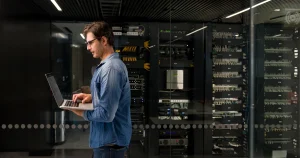The "city of the future" is no longer a dream - What kind of smart city world are Japanese cities heading toward?
2In the year 050, Japanese cities will undergo a dramatic evolution that will fundamentally change the way we live. At the center of this change is the "smart city. Urban living that is environmentally friendly, efficient, and comfortable. This will be made possible by the latest technologies. This article delves deeply into the vision of cities of the near future through the basic concepts of smart cities, advanced case studies, and specific examples of technological innovation.
Rethinking the definition of a smart city: why will cities in 2050 be "smarter"?

The key to a sustainable future that goes beyond mere technology implementation
A smart city is more than just a cluster of technologies. It is a futuristic city that improves people's quality of life, reduces environmental impact, and achieves sustainable development. 2050 will be a world in which all functions of a city are fully integrated digitally and managed in real time. By 2050, we will live in a world where all urban functions are fully integrated digitally and managed in real time.
For example:
Traffic System
Traffic congestion will become a problem of the past as self-driving cars become more widespread and AI sets optimal routes. In addition, new means of transportation, such as drone cabs and super high-speed railroads, will also emerge, significantly reducing travel time between cities.
Energy Management
The share of renewable energy will reach more than 901 TP3T, making the entire city energy self-sufficient. Smart grids will optimize the supply-demand balance of electricity and reduce wasteful energy consumption. In addition, the concept of "prosumers," where buildings themselves become power plants and supply surplus power to other buildings or electric vehicles, will become commonplace.
security
Facial recognition and AI surveillance systems prevent crime and ensure the safety of residents at all times. In addition, predictive crime prevention systems enable potential risks to be identified and countermeasures to be taken before a crime occurs.
Medical and Health Care
The linkage of wearable devices and AI will enable 24-hour monitoring of personal health status and early detection and prevention of diseases. In addition, advances in telemedicine technology will enable people to receive diagnosis and advice from specialists around the world. In this way, the smart city of 2050 will be a "smart" city that uses technology to solve urban problems and enrich the lives of its citizens.

Tackling the Challenges Japan Faces - Why Japan Needs Smart Cities
Japan is currently facing the combined challenges of a declining birthrate, an aging population, environmental issues, and increasing urbanization. These issues cannot be adequately addressed by conventional urban planning and policies, and new approaches are needed. This is where the concept of smart cities emerges as an important solution.
Responding to an Aging Society
It is projected that by 2050, approximately 40% of Japan's total population will be 65 years of age or older. This rapid aging of society will cause a variety of problems, including increased demand for medical and long-term care services, labor shortages, and rising social security costs. Smart cities can address these issues by introducing support systems for the elderly that utilize AI and robot technology, as well as telemedicine services.
Urbanization and rural depopulation
While population continues to be concentrated in urban areas, depopulation is expected to continue in rural areas, further widening the disparity between regions. This may lead to aging infrastructure and difficulties in maintaining public services in rural areas. By utilizing smart city technology, efficient urban management and remote services can be provided, and a sophisticated living environment can be maintained in rural areas.
Environmental Issues and Energy Challenges
Addressing climate change and sustainable energy use are pressing issues for Japan. Smart cities can significantly reduce environmental impact through efficient use of renewable energy and optimization of energy consumption. For example, smart building technologies that improve the energy efficiency of buildings and smart grids that optimize the balance between supply and demand of electricity are being introduced.
Reinforcement of disaster countermeasures
In Japan, where the risk of natural disasters such as earthquakes and typhoons is high, it is essential to build effective disaster prevention and mitigation systems. Smart cities enable advanced disaster countermeasures, such as early warning systems utilizing IoT sensors and AI, real-time evacuation guidance, and rapid recovery assistance.
To address these challenges, urban design must be digitized and efficient public services must be provided. Smart cities are the key to a comprehensive solution to these complex problems. Through technological innovation and social system transformation, Japan will be able to realize a sustainable and vibrant society.
Advanced Smart City Case Studies from Around the World - Lessons from Singapore and Copenhagen
societySuccessful examples of smart cities can be found throughout the world. Of particular note are the initiatives in Singapore and Copenhagen. These cities are combining innovation and sustainability to improve the quality of life for their citizens.

Singapore - At the forefront of technological innovation
Urban Transportation Systems
Singapore has one of the most efficient traffic systems in the world. The real-time traffic management system, iTransport, uses thousands of sensors and cameras to instantly assess traffic conditions and suggest optimal routes using AI. It is also successfully linked to self-driving cars and shared traffic services to reduce traffic congestion and CO2 emissions.
Digitalization of Healthcare
Wearable devices and big data analytics are playing an important role in Singapore's healthcare sector. Smart Health Assist" uses wearable devices to collect health data from citizens to help them manage their health, especially the elderly and people with chronic diseases. Medical professionals can check data in real time and respond quickly.
Citizen Participatory Urban Management
Singapore has a system that allows citizens to report urban problems through an app called OneService. Residents report road damage and problems with public facilities in real time, and prompt repairs are made. This citizen-participatory approach has led to increased efficiency and satisfaction in city management.

Copenhagen - Sustainability Meets Smart Technology
Utilization of renewable energy
In Copenhagen, much of the city's energy comes from renewable energy sources such as wind and solar. The city is at the forefront of environmental technologies, such as the promotion of wind power through the Copenhagen Cleantech Cluster and the introduction of the Amager Bakke waste incineration plant.
Introduction of Smart Grid
Copenhagen has implemented smart grid technology to manage peak hours of energy consumption. Residents can use smart meters to monitor their home's energy use in real time, promoting efficient consumption.
Bicycle infrastructure development
Copenhagen is also famous as a bicycle city, with bicycles accounting for about half of all travel within the city. A dedicated road network has been developed, and a data collection system, Copenhagen Bicycle Account, analyzes users' movement patterns to evolve a more comfortable infrastructure.
Lessons from Singapore and Copenhagen
What we can learn from these cities is that it takes not only technological innovation, but also citizen participation and a sustainable vision. Cooperation between citizens and government is the key to building the future, and Japanese cities can learn from these lessons to become efficient and sustainable smart cities.
Smart City Projects in Japan - City-by-City Initiatives

Tokyo - Smart City based on the Future City Concept
Tokyo has taken the opportunity of the 2020 Olympic and Paralympic Games to accelerate its transformation into a smart city. Particularly, improving the efficiency of the transportation system and reducing environmental impact are major goals.
Introduction of self-driving cars
In Tokyo, a demonstration test of self-driving cars is underway in some areas, with AI analyzing traffic conditions in real time and providing optimal operating routes.
Energy Efficiency
To expand the use of renewable energy, Tokyo is developing a smart grid, aiming to be carbon neutral by 2050.

Yokohama - Smart City Special Zone Initiatives
Since Yokohama City was designated as a Smart City Special Zone in 2014, the city has been promoting technological innovation in a variety of fields.
Energy Management System
Yokohama City has introduced a "Smart Energy Network" that uses renewable energy and optimizes energy supply by region. This has made it possible to supply electricity without waste.
Innovations in the Medical Field
Wearable devices for health management and telemedicine systems are enhancing medical services for the elderly.

Osaka - Future City Regeneration Project
In Osaka, the transformation into a smart city is underway for the purpose of urban renewal and the development of the tourism industry. Disaster prevention measures are being strengthened, especially in anticipation of the Osaka Expo.
Introduction of Disaster Prevention Technology
Earthquake forecasting technology and remote response systems have been introduced to enable rapid response to disasters. In addition, evacuation guidance systems utilizing smart infrastructure have been introduced to mitigate risks.
These smart city projects, along with technological innovations, are taking important steps toward building a sustainable urban model.

The Future Created by Technology - Key Technologies Supporting Japan's Smart Cities
AI, IoT, Big Data, Cloud - Four Innovative Technologies Supporting the Foundation of Smart Cities
- AI (Artificial Intelligence)In 2050, AI will be responsible for the management of entire cities, enabling predictive maintenance and crime prevention.
- IoT (Internet of Things)The system collects real-time data from the entire city through sensors to improve efficiency in traffic and energy management.
- Big Data Analysis: Analyze vast amounts of urban data to help make policy decisions and solve problems.
- cloud computingThe city is the foundation for the safe storage and management of data and for the advanced coordination of urban functions.

Summary: A Vision of Smart Cities for 2050 - Let's Create the Future Together
In 2050, Japanese cities will undergo a new evolution and be reborn as smart cities. To achieve this, citizens, businesses, and the government must work together to create sustainable cities. Will you join us in this project for the city of the future and help us build a richer and more convenient life together?










